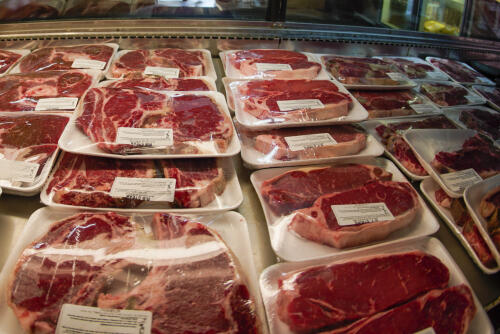Meat
For years, climate scientists have called for a phase-out of fossil fuels to avoid catastrophic global warming. Now, according to a first-of-its-kind survey of more than 200 environmental and agricultural scientists, we must also drastically reduce meat and dairy production — and fast. Global livestock emissions should peak by 2030 or sooner to meet the Paris climate agreement target of limiting the global temperature increase to 1.5 degrees Celsius, the surveyed climate experts said. In high- and middle-income countries, which produce and consume the overwhelming majority of the global meat and dairy supply, livestock emissions should peak much earlier than in low-income countries. “We need to see major changes in livestock production and consumption — really deep and rapid changes over the next decade,” said Helen Harwatt, an environmental social scientist and lead author of the survey repo...
You might be old enough to remember the famous “Where’s the Beef?” Wendy’s commercials. This question may be asked in a different context since U.S. regulators approved the sale of lab-grown chicken meat made from cultivated cells in June 2023. Growing animal cells in the lab isn’t new. Scientists have been culturing animal cells in artificial environments since the 1950s, initially focusing on studying developmental biology and cancer. This technique remains one of the major tools in life science research, especially for drug development. The USDA approved cell-cultivated chicken on June 21, 2023. What are cell cultures? Cell cultures are typically grown using either natural or artificial growth media. Natural media comprise naturally-derived biological fluids, whereas artificial media comprise both organic and inorganic nutrients and compounds. Both contain the necessary ingredients to foster the growth and...
Should California be able to require higher welfare standards for farm animals raised in other states if products from those animals are to be sold in California? On May 11, 2023, the U.S. Supreme Court upheld California’s position by a 5-4 vote in National Pork Producers Council v. Ross. While the ruling was fractured and reflected complex legal questions, it is a major victory for those working to improve farm animal welfare. A number of states will undoubtedly take advantage of the power that the Supreme Court has recognized. As a specialist in animal law, I expect that this will result in a patchwork of laws that are likely to make national meat producers very uncomfortable. Ultimately, it could push Congress to set federal standards. More indoor space for sows Pork producers sued California over a law that the state’s voters adopted in 2018 via ballot initiative with over 63% approval. It set new conditions for raising hogs, veal calves and egg-laying chicke...
Should Californians be able to require higher welfare standards for farm animals that are raised in other states if products from those animals are to be sold in California? The U.S. Supreme Court will confront that question when it hears oral argument in National Pork Producers Council v. Ross on Oct. 11, 2022. Pork producers are challenging a law that California voters adopted in 2018 via ballot initiative with over 63% approval. It set new conditions for raising hogs, veal calves and egg-laying chickens, whose meat or eggs are sold in California. The state represents about 15% of the U.S. pork market. At most commercial hog farms, pregnant sows are kept in “gestation crates” that measure 2 feet by 7 feet – enough room for the animals to sit, stand and lie down, but not enough to turn around. California’s law requires that each sow must have at least 24 square feet of floor space – nearly double the amount that most now get. It does not require f...



